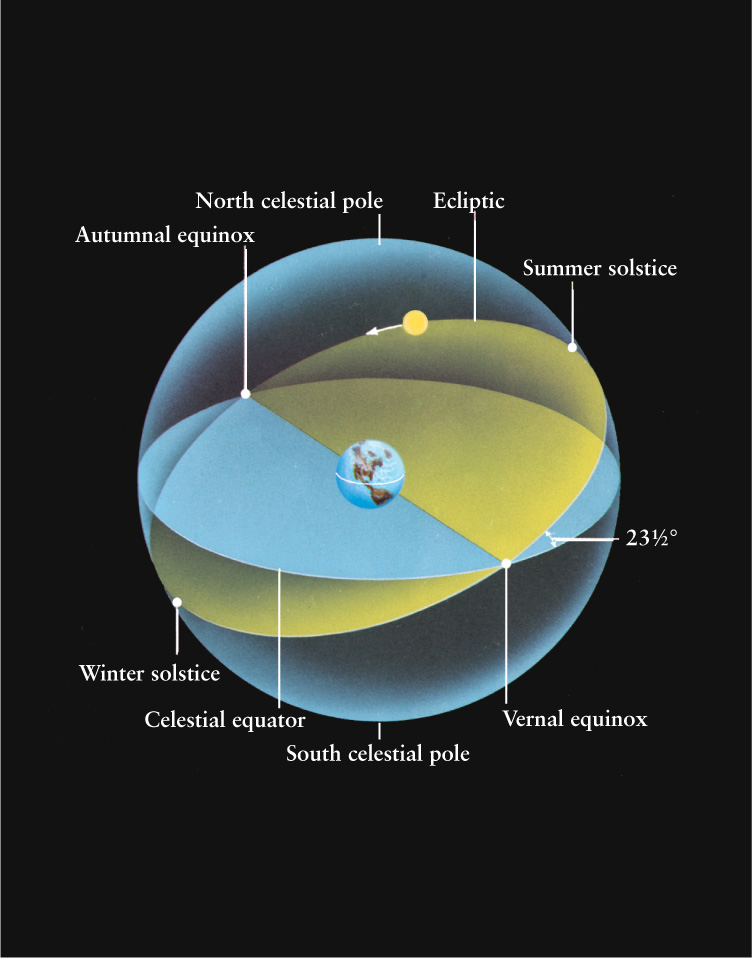
Figure 2-15: The Ecliptic, Equinoxes, and Solstices This illustration of the celestial sphere is similar to Figure 2-14b, but is drawn with the north celestial pole at the top and the celestial equator running through the middle. The ecliptic is inclined to the celestial equator by 23½° because of the tilt of Earth’s axis of rotation. It intersects the celestial equator at two points, called equinoxes. The northernmost point on the ecliptic is the summer solstice, and the southernmost point is the winter solstice. The Sun is shown in its approximate position for August 1.